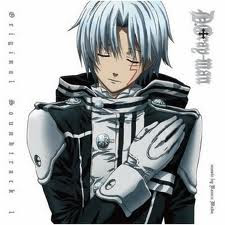Fifth Philippine Republic Presidents (Under the new "People's Power" Constitution)

GLORIA MACAPAGAL ARROYO
Fourth President of the Fifth Republic of the Philippines and 14th Philippine President
Birthdate: April 5, 1947
Term: 2001 - June 2010
Description: The daughter of the late President Diosdado Macapagal. The second woman to be swept into the Presidency by a peaceful People Power revolution (EDSA II).
more about president gloria macapagal arroyo

JOSEPH EJERCITO ESTRADA
Third President of the Fifth Republic of the Philippines
Birthdate: April 19,1937
Term: 1998 - 2001
Filipino film actor and director, later politician. He resigned after the impeachment trial against him collapsed.

FIDEL VALDEZ RAMOS
Second President of the Fifth Republic of the Philippines
Birthdate: March 18, 1928
Term: June 30, 1992 - June 30, 1998
As head of the State his administration centerpiece program is the Philippines 2000; which aim to uplift the Philippines as a newly industrialized country by the year 2000.

CORAZON COJUANGCO AQUINO
First President of the Fifth Republic of the Philippines and the first woman president of the Philippines.
Birthdate: January 25, 1933
Term: February 25, 1986- June 30, 1992
Political leader and the First Woman President of the Philippines. She succeeded her murdered husband, Benigno "Ninoy" Aquino Jr.(a popular critic of the Marcos administration), as leader of the opposition to President Ferdinand Marcos.
Click here to get more information about the Philippines Former President Corazon “Cory” C. Aquino
Fourth Philippine Republic Presidents (Martial Law, "The New Republic" & Parliamentary Government)
 FERDINAND EDRALIN MARCOS
FERDINAND EDRALIN MARCOS
Sixth and last President of the Third Republic of the Philippines
Birthdate: September 11, 1917, Died- September 28, 1989
Term: December 30, 1965- December 30, 1973
President of the Fourth Republic of the Philippines
Term: June 30, 1981 - February 25,1986
Philippine lawyer and politician who ruled by martial law and was ousted by a peaceful People Power Revolution in 1986.
Third Philippine Republic Presidents

DIOSDADO MACAPAGAL
Fifth President of the Third Republic of the Philippines
Term: December 30, 1961 - December 30, 1965
Poet, politician, lawyer, diplomat, statesman, economist and intellectual, Diosdado Macapagal was born to poverty but rose due to diligence and brilliance.

CARLOS POLESTICO GARCIA
Fourth President of the Third Republic of the Philippines
Birthdate: November 4, 1896, died- June 14, 1971
Term: March 18, 1957- December 30, 1961
Famous for his austerity program and policy. He maintained the strong tradition ties with the United States and sought closer relation with non-communist Asian countries.

RAMON MAGSAYSAY
(Born- August 31, 1907, died- March 17, 1957)
Third President of the Third Republic of the Philippines
(Term: December 30, 1953- March 17, 1957)
Best known for successfully defeating the communist led Hukbalahap (Huk) Movement. Idol of the masses, champion of democracy, and freedom fighter.

ELPIDIO QUIRINO
Second President, Third Republic of the Philippines
Birthdate: November 16, 1890
Died: February 28, 1956
Term: April 17, 1948- November 10, 1953
Political leader and second president of the Independence Republic of the Philippines.

MANUEL ACUÑA ROXAS
Birthdate: January 1, 1892, died- April 15, 1948
Last President of the Commonwealth
Term: May 28, 1946- July 4, 1946
First President of the Third Republic of the Philippines
Term: July 4, 1946- April 15, 1948
Political leader and first president of the independence republic of the Philippines.
Second Philippine Republic Presidents (Japanese Occupation)
 JOSE LAUREL
JOSE LAUREL
President of the Japanese Sponsored Republic
Birthdate: March 9, 1891, died- November 6, 1959
Term: October 14, 1943- August 15, 1945
Became the President of the Philippines during the Japanese occupation of World War II.
Commonwealth of the Philippines (American Period Presidents )

SERGIO OSMEÑA
Second President of the Commonwealth
Birthdate: September 9, 1878, died- October 19, 1961
Term: August 1, 1944- May 27, 1946
Filipino statesman, founder of the Nationalist Party (Partido Nacionalista) and President of the Philippines from 1944 to 1946.

MANUEL LUIS QUEZON
First President of the Commonwealth
Birthdate: August 19, 1878, died- August 1, 1944
Term: November 15, 1935- August 1, 1944
Filipino statesman, leader of the independence movement, and first president of the Philippine Commonwealth established under United States tutelage in 1935.
First Philippine Republic President (Revolutionary Government/The Philippines under Spanish colonization)

GENERAL EMILIO FAMY AGUINALDO
President of the First Philippine Republic
Birthdate: March 22, 1869, died- February 6, 1964
Term: 1898- 1901
Filipino leader who fought first against Spain and later against the United States for the Independence of the Philippines.


























































